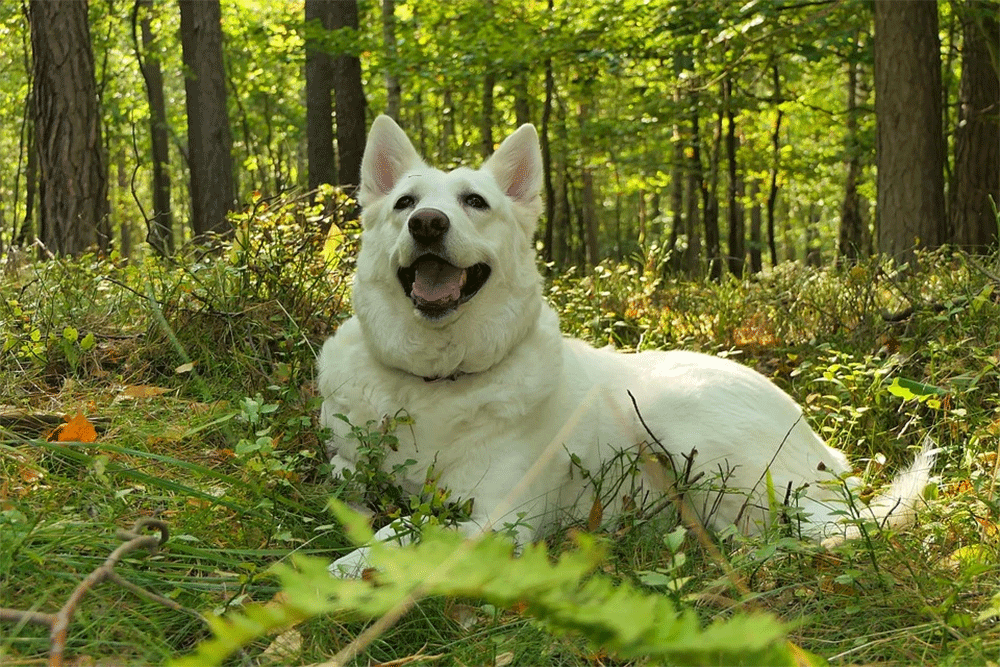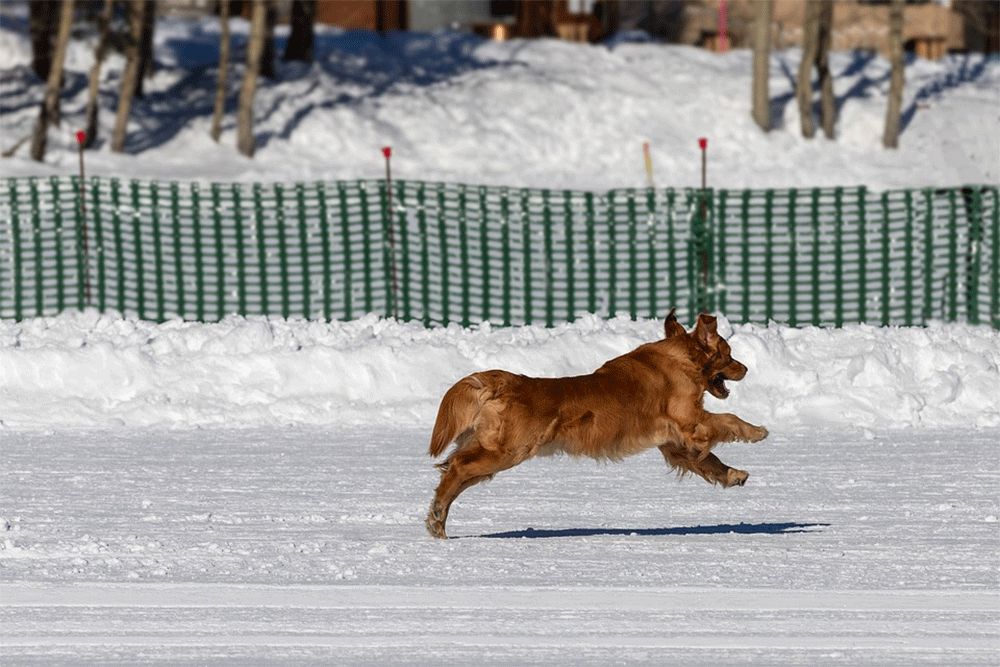If you have decided to spay your dog, then you will have noticed that the veterinarian has a lot of advice on how to care for it after the operation. Mostly, your dog will need to rest, recover, and be looked after for a few days.
This is mainly because your dog may feel groggy, confused, and dazed after going under general anesthesia and may still be in a lot of pain after the operation. In addition, undergoing a spaying operation will leave your female furry friend with a large incision that will need to be kept clean, and dry and will have to heal properly.
It is for this reason that your dog will have to wear a cone of shame and will have to rest, with no running around, jumping, or strenuous activity for a couple of days. So, what happens if you have a bouncy, energetic dog that does not seem to understand that they are on bed rest after their big op?!
As hard as you try to keep them rested, some doggies just want to play, jump and fool around. We are here to help you and tell you what happens if your dog jumps after being spayed.

What is spaying?
Before we try to explain why a dog must rest after spaying, you should know exactly what the operation entails to understand the circumstances fully. Spaying is the same process as neutering a dog, except it is for females.
When a dog is spayed, they will be put under anesthetic. Then, there will be an incision made just below the belly button and in the dog’s abdomen. Once inside, the veterinarian will remove the uterus, ovaries, and reproductive tract from the dog.
After this is done, they will stitch up the incision and leave it to heal by itself, which means that the stitches will not need to be removed, as they will be absorbed by the body. The wound is stitched, stapled, or glued back together with skin glue, and then after a few hours, and the dog will come back around from under the anesthetic.
After waking up, your dog can be very confused, groggy, wobbly, or appear drunk! In this sense, the dog should rest and come around fully until the drugs and medication wear off.
Why shouldn’t my dog jump after being spayed?
If your dog does not rest properly after being spayed, then there may be some complications with the surgery. For instance, your dog may inflame the wound, or it could get infected. In the worst cases, the incision can become torn open, bleed or become painful and inflamed.
Dogs may try to lick, chew or nibble on the wound, which increases the risk of it not healing, and becoming infected, and so your dog will need to have a cone on. If the veterinarian does not provide one, or it does not fit on your dog properly, then you can find one here. By wearing the cone, your dog should not be able to reach their incision or mess around with it.
The same goes for jumping after having the surgery. Whilst spaying a dog is highly common, it is an intrusive surgery that will need proper recovery afterward. Your dog may be in a little pain, feel tired, or generally confused after going to the operating table, so rest is incredibly important in the healing process.
In addition, you will be told not to let your dog run, jump, or do any strenuous activities. This is because at first, the incision is at risk of tearing open. It will take a few days for the incision to heal, and you do not want your dog to tear open the stitches in the meantime.
You should also keep your dog on a leash if you are walking them and keep them calm, relaxed, and not extremely active for a few days. Your dog should be left to heal and recover for at least 10 days to 2 weeks after being spayed so that the surgery is 100% successful and there is no risk of infecting or tearing open the wound.
Connect with a verified veterinarian in minutes. No waiting for appointments or office hours. No high fees. Your pet's health made convenient and worry-free.
What happens if my dog jumps after being spayed?
If you are worried about your dog jumping after being spayed, try not to panic too much. Jumping once or twice is unlikely to do any long-lasting damage, but you should exercise caution.
For instance, regular jumping after being spayed could tear open the stitches or rip open the incision left from the surgery, so you should ensure that this does not happen, or your dog’s wound could become infected.
That being said, the veterinarian will have used strong and durable stitches to heal your dog as fast as possible, so the sutures should survive in the event your dog does run, jump or exercise.
Stopping your dog from jumping up is more of a preventative measure to ensure their health and well-being. However, if the dog does end up jumping, then just keep an eye on the wound, ensuring that it is not open, wet, infected, and do not wash the wound yourself either.
If you do have any concerns about your dog or the incision after it is spayed, then contact your veterinarian for advice immediately.
How long after being spayed should you stop your dog from jumping?
Most veterinarians will advise that your dog rests and heals for about 10-14 days after being spayed. However, as this is an important surgery, the longer they rest and recover, the better the results will be.
That being said, how well or quickly your dog recovers after having the spaying surgery will depend on the dog itself, the breed, its age, and its health condition.
For most cases, we would recommend that you try to prevent your dog from jumping up on you, your bed, the couch, up the stairs, or any other surfaces for up to a month after surgery. This will completely reduce the risk of there being any issues with the stitches, incision, or healing process entirely.
During this time, it is vital that you keep a watchful eye on your furry friend. See if you notice any abnormal behavior, or any different characteristics from normal, as this can indicate how your dog is feeling or whether they are healing properly.
For instance, if your dog still seems sad, tired, anxious, or lethargic, then it is probably not ready to start exercising and is still in recovery from the surgery. Your dog may be reluctant to stand up, wanting to sit down, lie down, or sleep, which can indicate that they need more rest and some time alone.
What is even more important is taking note if your dog seems to be in any pain or is not healing properly. If this is the case with your puppy companion, then you should seek advice from a medical professional or veterinarian as soon as possible.
How can you stop your dog from jumping after being spayed?

After your dog is spayed, your veterinarian will be able to advise you with any questions you have and will most likely offer you a list of instructions and recommendations for the best ways to care for your doggie in recovery.
The easiest way to prevent your dog from jumping after being spayed is simply to supervise their actions. Keep your dog in the same room as you at all times, and perhaps try keeping them on a leash so that they cannot run around the house and cause chaos.
Some veterinarians will advise keeping your dog inside a crate, like this one, with lots of toys and soft blankets to keep them occupied and comfortable.
In addition, try to block off any areas that may be a risk to them. For instance, if you have a stair gate, then keep it closed so that they do not climb up the stairs, and if you have couches and beds nearby, then keep the dog away from them. This will reduce any temptation to climb or jump up, which can damage the wound.
Try not to leave your dog alone at all for a couple of days. We understand that you may have work or other commitments, so perhaps try having a friend or family member over at the house to keep an eye on the dog when you are not there, to ensure that they recover fully.
If this is not an option for you, then you may have to crate your dog when they are alone or when you are not home. Just make sure that they have toys to play with, water, and soft furnishings to keep them cozy and comfortable at all times. Also, try not to leave them alone for too long, as they may get bored and try to nibble or scratch at the incision.
What should you do if your dog jumps after being spayed?
If your dog does jump after being spayed, then you should check the incision as soon as possible. Try taking a photograph to show to the veterinarian or to see if it looks as it should. If it is weeping, inflamed, bleeding, or open, then it is best to take your dog to get some medical help immediately.
If there are no signs of a problem, still check the wound. To do this, gently touch and feel around the area for any bumps. If your dog seems to be in pain, yelps, or tries to run away, then you should also take them to the veterinarian.
Most importantly, try to remain calm. Your dog will not understand why they should not be jumping and does not realize that they are in recovery most of the time. So, do not yell at or chastise your dog, and simply keep them calm, relaxed, and stress-free. If you do have any concerns, it is always best to contact the vet, just in case!
Conclusion
To conclude, after being spayed, your dog should not jump, run or partake in any strenuous activities and exercises. However, we understand that some dogs are high-energy and may jump around anyway.
This is not the end of the world, but you should check to see if there are any abnormalities in their wound and that they are healing properly. If you do have any worries about your dog’s health, then always seek help from a licensed veterinarian.

